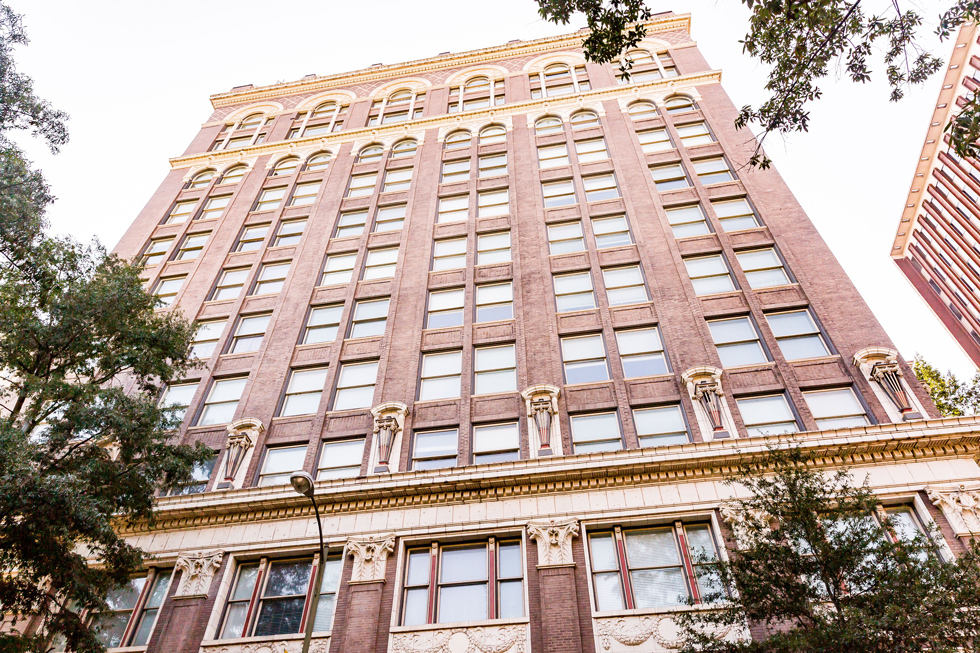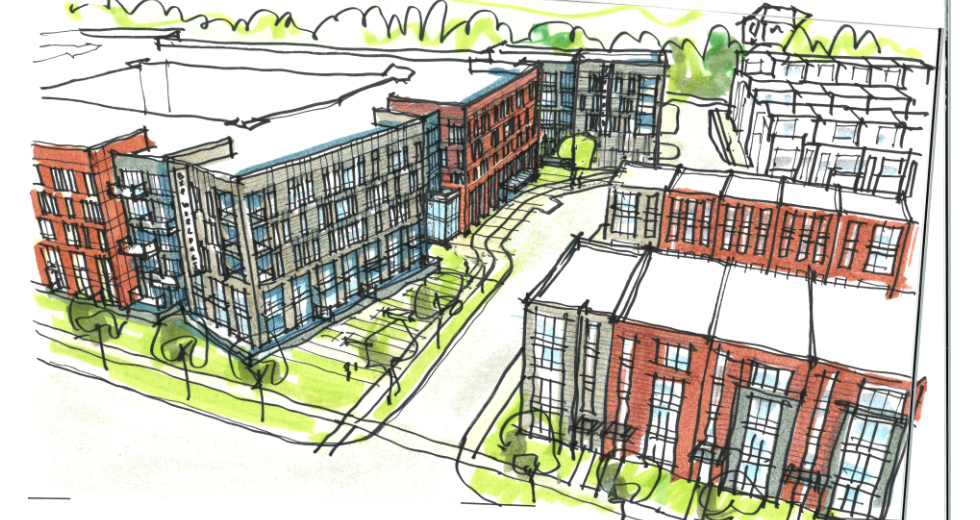Cities across the country, including Los Angeles, San Francisco, Chicago, Washington, D.C., Boston, and New York are taking steps to make adaptive reuse—repurposing buildings for something other than their original use—easier and more cost-effective for developers. It’s part of a broad effort to address ongoing housing shortages as well as provide opportunities for new commercial uses for underutilized real estate.
Doug Ressler, manager of business intelligence for Yardi Matrix, a commercial real estate data and research firm, says the market is “looking for creative solutions and is reacting to changing conditions such as the general lack of housing. We’re also at an inflection point for commercial real estate, especially offices, with people recognizing that we won’t go back to what it was like 10 years ago.” He adds, though, that “adaptive reuse isn’t a panacea.”
As businesses from Alphabet to Zoom and the federal government announce new return to office mandates and hybrid options, there continues to be uncertainty about how much space companies will eventually need and how that space should be configured.
Incentivizing adaptive reuse
Amidst the continued uncertainty, most cities are doing something to try to address vacant buildings downtown, says Tracy Loh, a fellow with the Anne T. and Robert M. Bass Center for Transformative Placemaking at the Brookings Institute.
“The key for downtown neighborhoods to recover is flexibility,” Loh says. “Probably 10% or less of office buildings are conducive to conversion to apartments, so it makes sense to allow repositioning for other uses such as retail business, light industrial, or storage.” Zoning reform can be crucial to encourage adaptive reuse, she adds.
“Cities can amend their zoning overlays to make it easier to use office space for other types of businesses such as day care centers, schools, pet care facilities, and wet labs that are often not allowed,” Loh says. “In Arlington, Virginia they recently added more options to their use tables for commercial buildings.”
Office-to-logistics conversions are likely to be minimal and concentrated in areas with high land costs and limited competition from other nearby properties, according to a report by leading logistics REIT Prologis, Inc. (NYSE: PLD). Some of the obstacles identified by the report include rezoning, entitlement, permitting, and approval delays compared to greenfield development.
Zoning reform, tax abatements, tax incentives, and regulatory reform are all paths that cities can take to encourage adaptive reuse of commercial buildings, especially for affordable housing, says Dennis Shea, executive director of the J. Ronald Terwilliger Center for Housing Policy at the Bipartisan Policy Center.
“For example, in Washington, D.C. the city relaxed the requirement that a certain percentage of construction workers on projects that receive government funding be D.C. residents,” Shea says. “They’re also offering a 20-year property tax break to developers who convert commercial buildings to residences.”
Actions taken by various other cities include:
San Francisco: Two city agencies issued a request for information in June to identify potential sites for adaptive reuse, estimate their feasibility for a conversion, and evaluate regulatory barriers to the projects. Property owners can propose various forms of city and federal support for their projects including tax abatements, zoning changes, and financing options.
Boston: The Downtown Office to Residential Conversion Pilot Program announced in July provides reduced property taxes of up to 75% of the standard tax rate for residential properties to commercial property owners who convert their buildings to residences. The tax rebates will last for up to 29 years, but applications are only open through June 2024 and projects must start construction by October 2025.
Los Angeles: The city is updating its 1999 Adaptive Reuse Ordinance, which streamlines the review process and eliminates some zoning obstacles to converting commercial buildings for residential use. The update will expand the program throughout the city and increase the number of eligible buildings.
California: Statewide, $400 million has been allocated for the next two years to encourage adaptive reuse. A proposal in the state legislature will limit fees, prevent parking requirements, and streamline the approval process for conversions that include an affordable housing component.
New York City: The city’s Office Adaptive Reuse Task Force has recommended a new tax incentive that it says could create as many as 20,000 new housing units over the next decade. The proposal includes rezoning areas in Manhattan to allow residential buildings, streamlining conversion policies to make more buildings eligible, and eliminating parking regulations. Mayor Eric Adam’s office and the Department of City Planning have also laid out a plan to convert vacant offices into housing as part of Mayor Adams’ “City of Yes” plan. The Adams administration is also launching an Office Conversion Accelerator to expedite complex office-to-housing conversion projects—speeding up the process of creating new housing while putting millions of square feet of empty offices to better use for New Yorkers.
Chicago: Five projects were recently selected by the city for conversion from office to residential use with the help of tax increment financing, grants for retail businesses on the ground floor, low-income housing tax credits, and historic tax credits.
The federal government is also stepping in to encourage adaptive reuse, with two tax credit bills introduced in Congress called the Neighborhood Homes Investment Act to loosen restrictions on density.
Meanwhile, “the Biden administration announced a working group to leverage federal funding to support commercial to residential adaptive reuse projects,” Shea says. “The General Services Administration (GSA) is reviewing underutilized federal buildings to see which ones might work well for conversion to housing, and the Department of Housing and Urban Development (HUD) is funding research on how to make conversions less costly.”
Market conditions that drive adaptive reuse
Numerous factors such as the age of a property and its configuration determine whether an office or other commercial building makes an attractive adaptive reuse project, Ressler says.
Developers need to look at inbound migration and employment figures to evaluate whether the demand will be there, Ressler says, especially because it takes an average of three to six years to complete a conversion.
“For a successful adaptive reuse project, you need real estate in a prominent location that’s supported by income growth to sustain the rent, plus you need to be able to convert the property in a way that makes it attractive,” says Shawn Tibbetts, COO of diversified REIT Armada Hoffler Properties, Inc. (NYSE: AHH). “It’s not just the right building, it has to be the right market.”
Armada Hoffler converted the former Dominion Energy headquarters in downtown Richmond, Virginia to a 174-unit multifamily property with the help of tax credits. The REIT also converted Chronicle Mill, a former textile mill outside Charlotte, North Carolina into a mixed-use development, also with tax credits and support from the local government.
“At Chronicle Mill we were able to combine adaptive reuse with a new adjacent building, which also helped make that project financially viable,” Tibbetts says. “Along with the rehabilitation, adding a new building helped lower the overall cost per unit, plus it is an incentive to the city since they gain more taxable property.”
Both experiences with adaptive reuse also involved zoning changes. Tibbetts says it’s essential to have the local jurisdiction on board to make adaptive reuse work.
“We’ve looked at two other potential conversions this year in North Carolina, but neither could be justified from a cost standpoint,” Tibbetts says. “Even if the buildings themselves were free, it would take so much time, money, and energy to convert them. We couldn’t get enough units to make them work either.”
While converting an existing building to a new use is the first thing that most people think of when they hear about adaptive reuse, in some cases the repurposing works better as a full or partial tear down. In Rockville, Maryland, for example, BXP (NYSE: BXP) acquired 31 acres with seven offices that will be demolished and replaced with purpose-built lab space and multifamily housing.
“The I-270 corridor is the epicenter of the life sciences market and the office buildings on this site are obsolete,” says Pete Otteni, executive vice president and co-head of the Washington D.C. region for BXP. The location is already amenitized with transportation, shops, and restaurants, so it’s the right kind of environment for us to develop a sense of place.”
Initially, BXP planned to convert the offices to deliver lab space as quickly as possible.
“There’s always a tradeoff you make when you transfer the use of a building to something else,” Otteni says. “Now that demand for lab space is paused because of higher interest rates, recession fears, and the slowdown in venture capital investing, we’re no longer concerned about speed to market.”
Meanwhile, in Herndon, Virginia, BXP acquired a 10-acre site with 350,000 square feet in two vacant office buildings but chose not to keep the offices. The site has to be rezoned for residential use to allow for 350 apartments and 101 townhouse units.
“The ability to reuse the parking deck provided a big cost savings, but the floor plates of the two office buildings, which were connected by one lobby, were not conducive to residential use,” says Rich Ellis, senior vice president, residential for BXP. “Instead of re-skinning the office buildings and replacing the mechanical systems, we’re seeking to five levels of wood-framed residential buildings, which is much more cost-efficient.”
“Adaptive reuse is a value play and we’ve done the math but so far we haven’t gotten to the point that office owners are ready to come down enough in valuation to make it work,” Otteni says. “If you can pay less because of tax credits and incentives, that might make the difference, but it all depends on the specifics of the building layout and location.”
Another challenge of adaptive reuse for many developers is the added layer of risk.
“You don’t know what you don’t know about what you’ll find when you open the walls,” Ellis says. “You need a higher expected return to compensate for that risk.”
While Ellis concedes that adaptive reuse can save time compared to ground up development, he says budgeting accurately for a conversion can be extremely difficult because of the unknown risks.
Future of adaptive reuse
Despite the interest in converting commercial real estate for different uses, in 2022 the conversion of offices dropped 15% compared to 2021 to a 10-year low, according to the Adaptive Reuse Report from Yardi Matrix, released in July.
However, the report also found that the number of future adaptive reuse projects in the pipeline includes 122,000 converted apartments to be developed over the next few years. That compares to a projection of 77,000 apartments in the pipeline in 2022’s report. Office conversions are expected to represent 37% of the total, followed by hotels (23%) and factories (14%).
Hotel conversions were more popular than office conversions in 2022, and the number of apartments converted from hotels rose by 43% compared to 2021, primarily for affordable housing, Ressler says.
While challenges remain for adaptive reuse, public-private partnerships and concern about revitalizing downtown cores are likely to push developers to find creative solutions for vacant commercial buildings.


